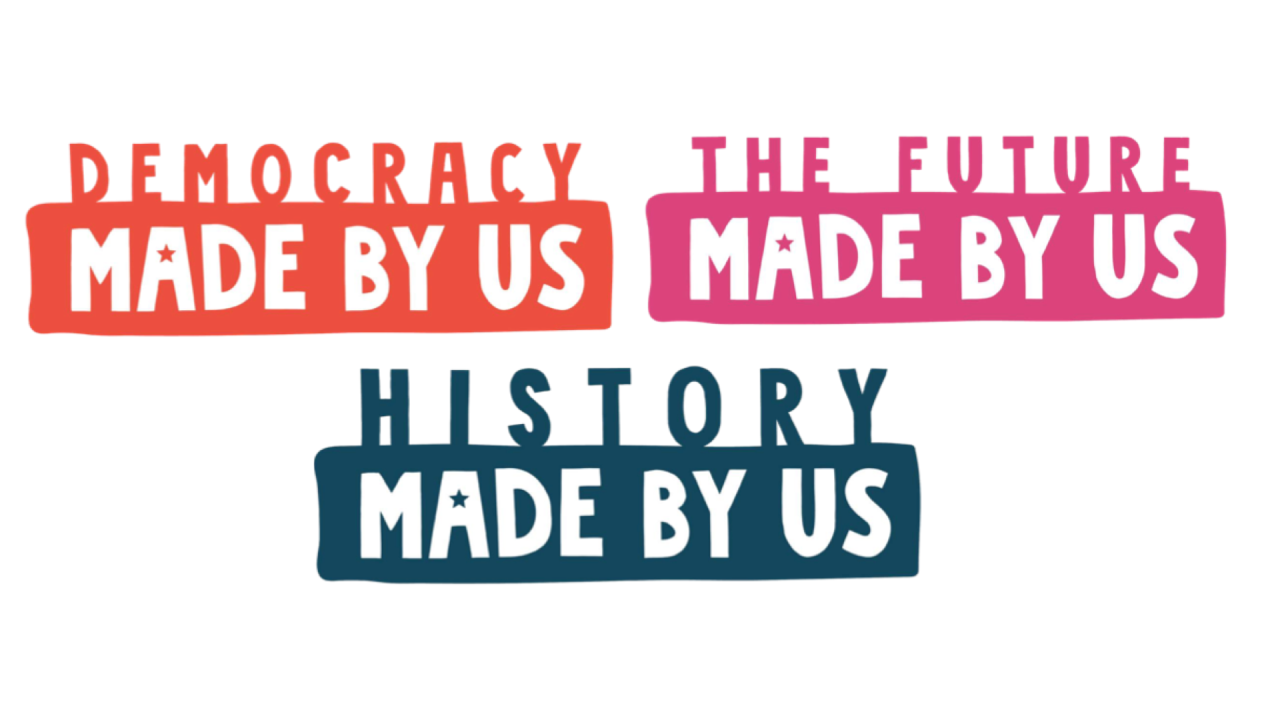
Change is multifaceted, and demographic change is no exception. For example, the population of the US is steadily becoming more diverse with regard to race, culture, and gender. Children under the age of 15 are already “majority minority” (e.g., non white), and 1 in 6 young adults identify as LGBT. While some balk at lumping people into “generations,” the rapid pace of change in our world means that children born even a decade apart grow up shaped by very different experiences and those experiences shape how they want to engage with the world. In today’s guest post, Caroline Klibanoff, Managing Director of Made By Us at the Smithsonian’s National Museum of American History, shares an opportunity for museums to join a data-driven initiative to respond to the needs of the youngest generation of museum goers.
—Elizabeth Merritt, VP Strategic Foresight and Founding Director, Center for the Future of Museums
Made By Us is a coalition of over 100 history museums, sites, archives, and youth-focused civic education organizations devoted to engaging and empowering the generations that are the future of our country. The initiative is led collectively by the Smithsonian’s National Museum of American History, Monticello, the National Archives Foundation, the First Americans Museum, Atlanta History Center, HistoryMiami, Heinz History Center, New-York Historical Society, the Charles H. Wright Museum of African-American History, and Missouri Historical Society. The coalition is still growing, and I hope you will consider joining us as well.
Recognizing that no single institution can tell the “full story” of U.S. history – and that many museums cannot easily pivot to the latest platforms and trends – Made By Us leverages the rich collective resources of our partner institutions and channels history through pop culture, entertainment and communities, meeting young people where they are. To support this work, we’ve collaborated with the research firm Cassandra to understand the attitudes and behaviors of Millennials (24-40 years old), and Generation Z (3-23 years old).
Our work with Cassandra reveals that both Millennials and Gen Z are highly politically engaged. But there is a fundamental difference in Gen Z’s approach that presents implications – and opportunities – for museums.
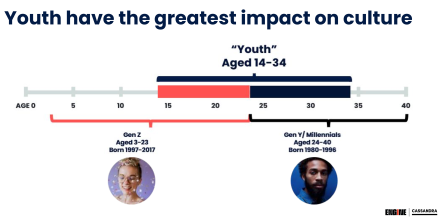 While Millennials protested the very existence of institutions by abandoning them, Gen Z is pushing for reform from the inside out, holding institutions accountable to higher standards. They’re leaning in and highly engaged. They aren’t rejecting “The Man” wholesale – they want to improve him.
While Millennials protested the very existence of institutions by abandoning them, Gen Z is pushing for reform from the inside out, holding institutions accountable to higher standards. They’re leaning in and highly engaged. They aren’t rejecting “The Man” wholesale – they want to improve him.
You may recall the Occupy Wall Street demonstrations of ten years ago, where many Millennials protested wealth inequality and the stock market. Millennials’ signature idealism had turned to disenchantment and disengagement as they entered the workforce in a recession. This resulted in a turn away from institutions and affiliations that still persists.
Earlier this year, young people again made headlines for taking on Wall Street, this time through an online Reddit community called r/WallStreetBets. Behind anonymous screen-names, a groundswell of Reddit users discussed buying a low-cost stock they were familiar with – Gamestop – which would undercut hedge funds that had shorted the stock. The Redditors drove up the stock price far beyond its fundamental value, taking down at least two hedge funds to the tune of $13 billion.
In the media, it was portrayed as another battle between the vanguard of youth against institutions. But unlike Occupy Wall Street, the Gamestop story bears the hallmark of Gen Z’s insider approach.
As the Gamestop story unfolded, my 22-year-old colleague shared with me that she was hearing more of her friends interested in investing. Financial literacy book sales jumped. Search results for “how does the stock market work” skyrocketed. Investing TikToks went viral.
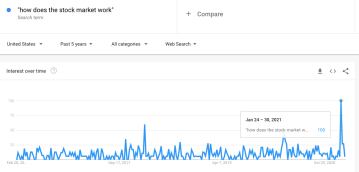
Similarly, amid protests for racial justice this summer, young content creators began sharing social media posts explaining topics like the prison-industrial complex, industrial agriculture and the Tulsa Race Massacre. Varying in credibility, sources and political charge, these posts fed a growing desire for context and knowledge, and some were shared widely across social networks. According to Cassandra, the summer of 2020 left young people feeling more hopeful about the future, buoyed by their impact.
Gen Z’s urgent, intense activism is propelled forward by issues like climate change, mass shootings and racial justice, as well as moments like the 2016 election, the 2018 Parkland shooting, the 2020 murder of George Floyd and the global pandemic which is disrupting school and careers. Building on their digital sophistication, a connected social world, and fast-accruing experience in organizing, Gen Z is ensuring that they be taken seriously by decision-makers, whether the Department of Education or the NRA.
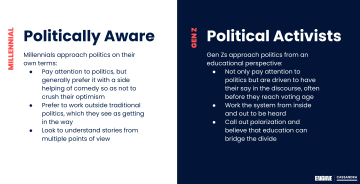
For museums, this kind of engagement is encouraging; it’s an opportunity to provide trusted expertise, sources and scholarly context. But to join their conversation, we have to make room at our decision-making tables for Gen Z leaders and creators, embracing the accountability they’re putting in place.
What could this look like?
To respond to the needs and behavior of Millennials, many museums pioneered new technology, introduced after-hours events, and offered discounted young-professional memberships to increase access to existing programming.
For Gen Z, which is leaning into reform, it will not be enough to simply re-price and re-package. Museums need to rebuild and re-imagine institutions and education to meet expectations for content, accountability structures, and decision-making. It means making space for input from those who will take up the mantle of our democracy (and our institutions!) going forward.
This might look like:
- Adding time for listening and applying research to the front end of project plans – a recent Knight report found that 54% of museums capture feedback, but only 18% use audience data to shape offerings.
- Creating roles for young people on your committees and councils, rather than a separate youth council or internships.
- Taking social media seriously as a vehicle for information to meet curiosity (and to know what others are saying)
- Considering how your museum might serve Gen Z’s needs beyond education – they’re also looking for respites of calm, mental health help, career support, and local community
I know it’s tough to hear another must-do when so many museums are stretched thin just trying to keep doors open – or closed – during COVID-19. You’re thinking: Now we have to reach Gen Z, and meet their standards, and we might get it wrong, and do they even buy memberships anyway? (Well, they might not buy memberships – yet. The majority of Gen Z is still under 18, and you may already reach them through K-12 and family programming.)
But we’re lucky to have a futurist and several historians on our team at Made By Us, which helps us keep the long view in mind. By the nation’s 250th anniversary in 2026, well over half of Gen Z will be voting age. That’s why we’re starting now, to grow a relationship at the speed of trust, to write the next 250 years of history together.
It’s not realistic to tackle this field-wide tidal wave individually. That’s where Made By Us comes in – helping museums do more, together, to engage young people than any site can do alone.
We don’t have all the answers. But we’re collaborating to share knowledge and resources, and evolving our approach along the way. The American Alliance of Museum’s latest Trendswatch report encourages museums to undertake a process of strategic foresight, to better respond to possible disruptions. How many museums are looking ahead to the needs of future generations to ensure we are prepared to serve? There are at least 100 engaged in this work through Made By Us – but likely many more. I’d love to hear about your work and invite you to connect with us. We are encouraged by the positive impact we’ve made in our first year. As we extend our reach, helping hundreds of museums become go-to resources for young people seeking context, inspiration and civic empowerment, I invite you to join in the journey. Complete this form to arrange a call with the Made By Us team or access a brief webinar about the project.




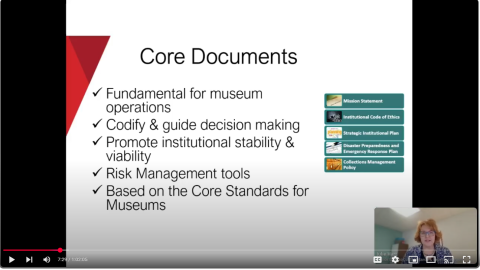


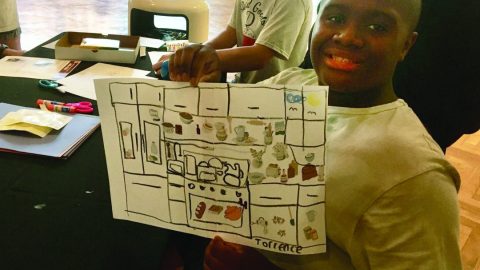
As a millennial busting my butt in the museum field, I think your research is misleading. You quoted the Millennials in Adulthood, which looked at religion and political unaffiliating. “They are relatively unattached to organized politics and religion, linked by social media, burdened by debt, distrustful of people, in no rush to marry— and optimistic about the future.”
But stated “While Millennials protested the very existence of institutions by abandoning them, Gen Z is pushing for reform from the inside out, holding institutions accountable to higher standards. They’re leaning in and highly engaged. They aren’t rejecting “The Man” wholesale – they want to improve him.” I agree we became distrustful, but you lump all institutions in together and that was not the focus on the article. We did enter into a recession workforce, that was also run by previous generations and unwilling to change. Personally that has been my experience trying to get institutions to change and met with a wall, butting up against that wall for decade or so and then realizing nothing was going to change. Now that some Xennials or Millennials are moving up into more prominent rolls, I think that is why we and Gen Z are seeing a resurgence in internal reform. Gen Z also may just have brighter more energy to do so, because they have not faced the years of resistance yet. I am hopeful they will reform museum institutions, but the attitude of Millenials being lazy and only ever abandon things instead of fixing them, is half the reason we do so. We are always pictured as the reasons things are not working, when we were set up for failure. We have learned we cannot fix a ship if it is set to resist us, so we abandoned to save ourselves.
Thanks for your comment Sara. I’m the author and I am a millennial also busting my butt in the museum field 🙂 Abandoning institutions is not a sign of laziness, nor does the article suggest that – rather it’s a result of taking the only viable path available. It’s not a judgment on Millennials, there’s no right way to reform, but the research is clear. As you noted (“butting up against a wall,”) institutions are beginning to embrace change in a way we have not seen in the last 10 years.
The phrase “Now we have to reach Gen Z, and meet their standards, and we might get it wrong” stroke a chord. For someone working in a small museum with a growing collection and shrinking staff force, I sometimes feel like “each [person] for [him/her]self”. However, there’s a way to lead from the trenches and address the now and open the doors to the emerging generations of museum-goers and/or workers…even without much-needed resources (financial, support staff, time to plan/assess, facilities). In spite of the present scenario, in my museum we have have been able to impact 3-4 older Gen Zs per semester through a goverment program similar to Federedeal work-study. They have one-on-one training in their respective areas of interest, acquire valuable knowledge and work ethics, and many are later admitted to internships at other institutions. I love the energy they bring to the whole experience.
I see the change will come. Just you wait.